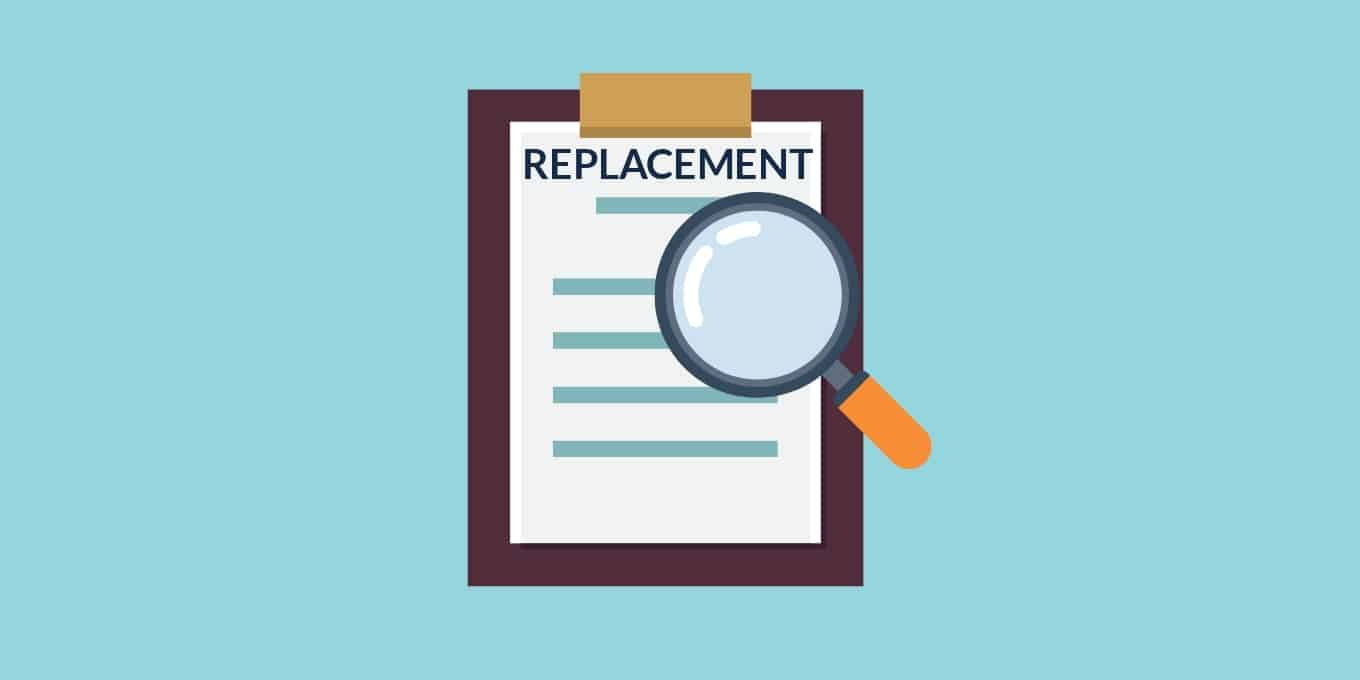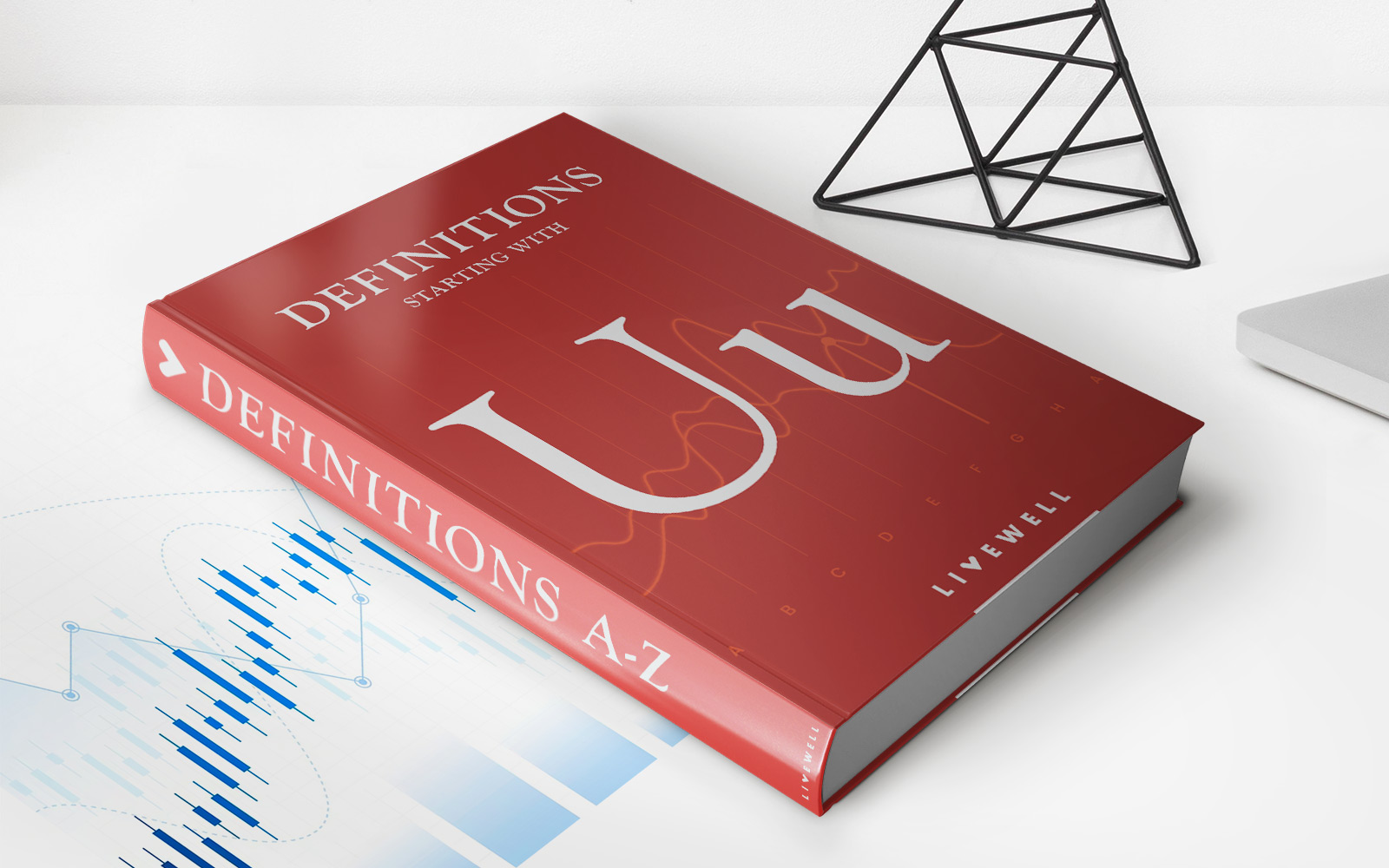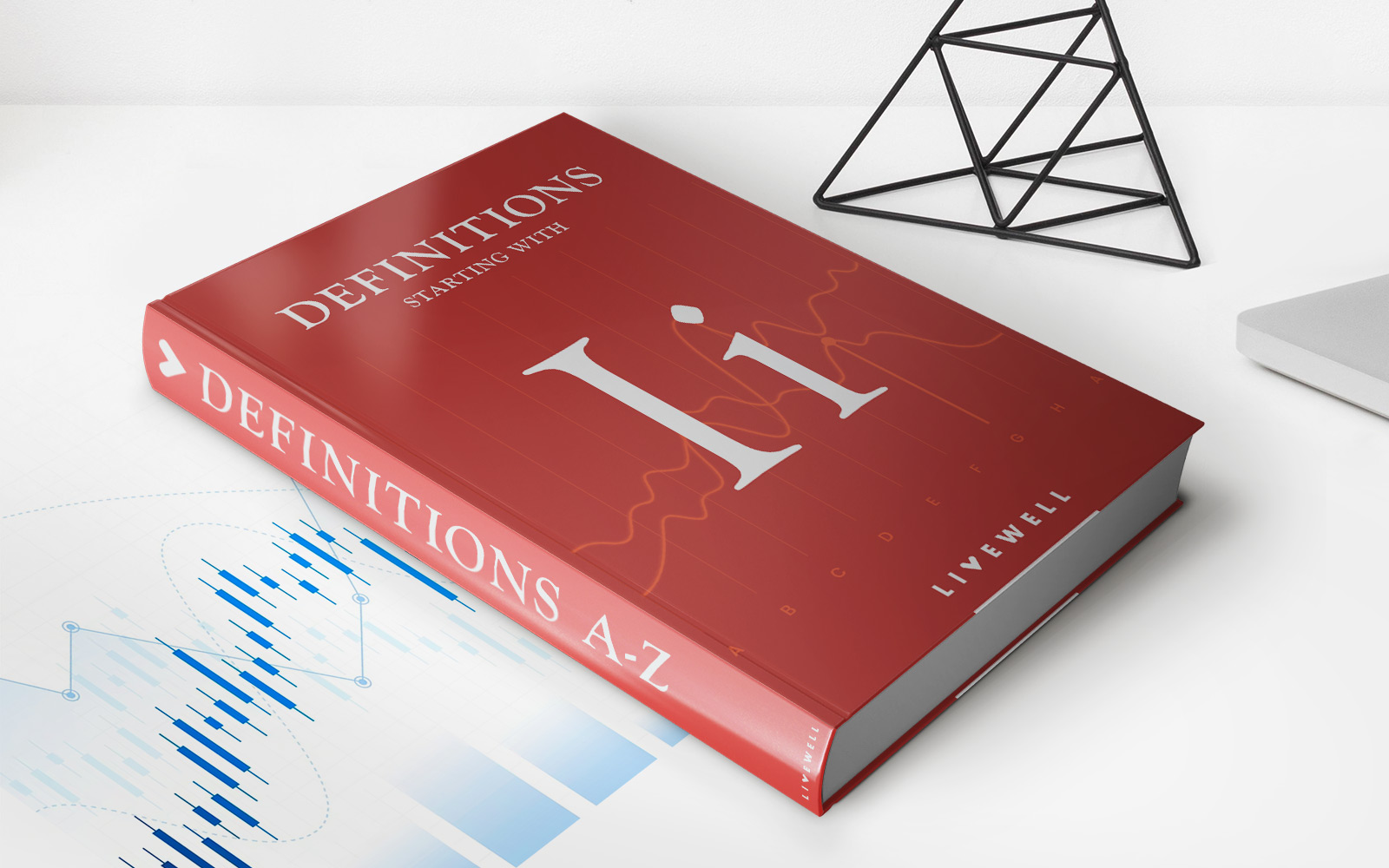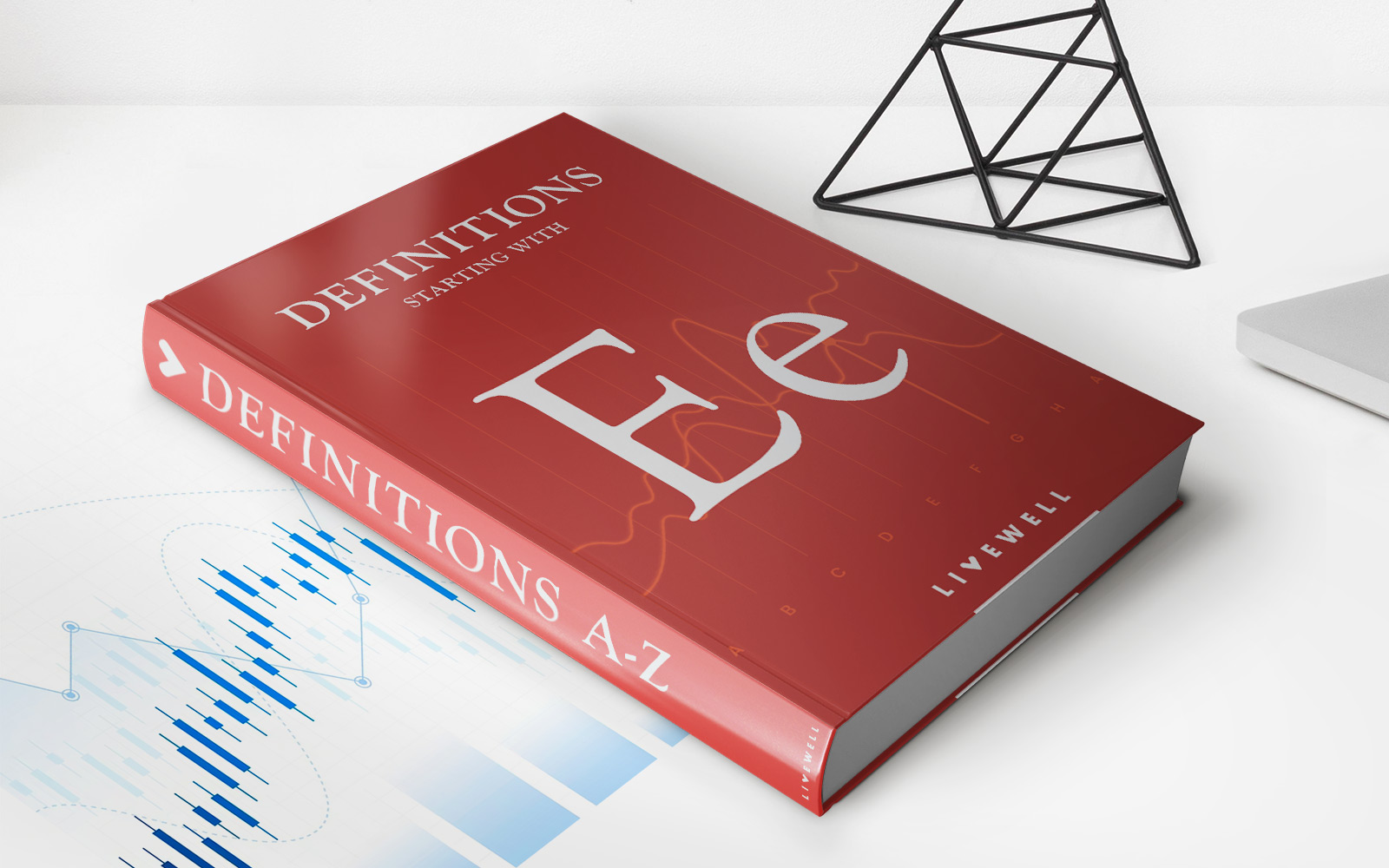

Finance
What Is Credit Life Insurance?
Published: October 14, 2023
Learn all about credit life insurance, a vital financial tool that provides protection for your loved ones by paying off outstanding debts in the event of your death. Master the ins and outs of this form of insurance and secure your family's financial future.
(Many of the links in this article redirect to a specific reviewed product. Your purchase of these products through affiliate links helps to generate commission for LiveWell, at no extra cost. Learn more)
Table of Contents
- Introduction
- What is Credit Life Insurance?
- How Does Credit Life Insurance Work?
- Benefits of Credit Life Insurance
- Coverage and Cost of Credit Life Insurance
- Who Should Consider Credit Life Insurance?
- Comparing Credit Life Insurance with Other Types of Insurance
- Common Misconceptions About Credit Life Insurance
- Criticisms of Credit Life Insurance
- Conclusion
Introduction
When it comes to managing your finances, it’s important to consider the unexpected. One such unexpected event is the possibility of your death, which can leave your loved ones burdened with your outstanding debts. This is where credit life insurance comes into play.
Credit life insurance is a type of insurance that offers financial protection to borrowers and their families in the event of the borrower’s death. It is specifically designed to cover the outstanding balance of a loan or credit amount, ensuring that the burden of repayment does not fall on the borrower’s loved ones.
While it may not be a topic that everyone likes to think about, having credit life insurance can provide peace of mind and financial security. In this article, we will delve into the details of credit life insurance, how it works, its benefits, the coverage and cost, and who should consider getting it.
Moreover, we will compare credit life insurance to other types of insurance and address common misconceptions and criticisms surrounding credit life insurance. By the end of this article, you will have a clear understanding of what credit life insurance entails and whether it’s a suitable option for your financial needs.
What is Credit Life Insurance?
Credit life insurance is a specific type of insurance policy that is designed to protect borrowers and their families in the event of the borrower’s death. It is typically offered by lending institutions, such as banks or credit unions, as part of a loan or credit agreement.
Unlike traditional life insurance policies that provide a lump sum payment to beneficiaries upon the insured person’s death, credit life insurance specifically covers the outstanding balance of the borrower’s loan or credit amount. This means that if the borrower passes away, the insurance policy will pay off the remaining debt, relieving the borrower’s family from the financial obligation.
Credit life insurance policies are often easy to obtain, with minimal underwriting requirements. Typically, borrowers can apply for credit life insurance at the time of taking out a loan or opening a line of credit. The cost of the insurance premium is usually added to the monthly loan payment, making it convenient for borrowers.
It is important to note that credit life insurance only covers the outstanding debt related to the specific loan or credit agreement. It does not provide coverage for any other debts or financial obligations of the borrower. Therefore, it is essential to carefully review the terms and conditions of the policy to understand its scope and limitations.
Credit life insurance offers borrowers and their families valuable protection and financial security in the event of the borrower’s death. It ensures that the burden of repaying the debt does not fall on the surviving family members, providing them with a sense of relief during a difficult time.
Next, let’s explore how credit life insurance works and the benefits it offers.
How Does Credit Life Insurance Work?
Credit life insurance works by providing financial protection to borrowers and their families in the event of the borrower’s death. Here’s how it typically works:
- Purchase of Credit Life Insurance: Borrowers can purchase credit life insurance when they take out a loan or open a line of credit. The insurance premium is usually calculated based on factors such as the borrower’s age, health, and the amount of the loan.
- Policy Coverage: The credit life insurance policy specifically covers the outstanding balance of the loan or credit amount. In the event of the borrower’s death, the insurance company pays off the remaining debt, thereby relieving the borrower’s family from the financial obligation.
- Beneficiary Designation: When purchasing credit life insurance, the borrower designates a beneficiary who will receive the insurance proceeds upon the borrower’s death. This is typically a family member or a loved one.
- Payment of Premiums: The cost of the credit life insurance premium is generally added to the borrower’s monthly loan payment. This means that the borrower does not have to make a separate premium payment to maintain the insurance coverage.
- Claims Process: In the unfortunate event of the borrower’s death, the designated beneficiary or the borrower’s family needs to file a claim with the insurance company. The insurance company will then review the claim and, upon approval, pay the outstanding loan balance directly to the lender.
It’s important to note that credit life insurance only covers the specific loan or credit agreement for which it was purchased. It does not provide coverage for other debts or financial obligations. Additionally, credit life insurance policies often have certain exclusions or waiting periods before the coverage becomes effective, so it’s important to carefully review the terms and conditions of the policy.
The benefit of credit life insurance is that it ensures the borrower’s loved ones are not burdened with the financial responsibility of repaying the debt in the event of the borrower’s untimely death. It provides peace of mind and a safety net for borrowers, knowing that their families will not face financial hardship due to their outstanding loans.
Now that we understand how credit life insurance works, let’s explore the benefits it offers.
Benefits of Credit Life Insurance
Credit life insurance offers several benefits to borrowers and their families. Let’s take a closer look at the advantages of having credit life insurance:
- Financial Protection: The primary benefit of credit life insurance is the financial protection it provides. In the unfortunate event of the borrower’s death, the insurance policy pays off the outstanding loan balance. This relieves the borrower’s family from the burden of repaying the debt, allowing them to focus on other important matters.
- Peace of Mind: Knowing that credit life insurance is in place provides peace of mind to borrowers. They can rest assured that their loved ones will not be burdened with their outstanding debts, ensuring their financial well-being even in the face of unexpected circumstances.
- Convenient Premium Payment: Credit life insurance premiums are typically included in the monthly loan payment, making it convenient for borrowers. They do not have to make separate premium payments or remember to renew the policy, as long as they continue to make their loan payments on time.
- No Medical Underwriting: Unlike traditional life insurance policies, credit life insurance often does not require extensive medical underwriting. This means that borrowers with pre-existing health conditions or older age may still be eligible for coverage without having to undergo a medical examination.
- Ease of Enrollment: Obtaining credit life insurance is often a straightforward process. Borrowers can apply for coverage at the time they take out a loan or open a line of credit, making it easy to enroll in the insurance policy and start enjoying its benefits immediately.
- Customizable Coverage: Credit life insurance policies can usually be tailored to fit the specific needs and circumstances of the borrower. This may include options for coverage duration, coverage amount, and additional features such as disability coverage or unemployment coverage.
While credit life insurance offers numerous benefits, it’s important for borrowers to carefully review the terms and conditions of the policy. Understanding the coverage limits, exclusions, and any waiting periods is crucial to ensure the policy meets their needs and provides the expected financial protection.
Now that we’ve explored the benefits of credit life insurance, let’s move on to discussing the coverage and cost associated with this type of insurance.
Coverage and Cost of Credit Life Insurance
When considering credit life insurance, it is important to understand the coverage and cost associated with this type of insurance. Let’s delve into these aspects:
Coverage: Credit life insurance specifically covers the outstanding balance of a loan or credit amount. In the event of the borrower’s death, the insurance policy pays off the remaining debt to the lender. The coverage amount is typically based on the initial loan amount and decreases over time as the borrower makes payments towards the principal.
Credit life insurance policies may also come with additional coverage options, such as disability coverage or unemployment coverage. These additional coverages provide assistance in case of disability that prevents the borrower from working or in the event of involuntary job loss.
Cost: The cost of credit life insurance is determined by various factors including the borrower’s age, health, and the amount of the loan. The premium is usually calculated as a percentage of the loan or credit amount, added to the monthly payment.
The cost of credit life insurance can vary among lenders and insurance providers. It is important for borrowers to shop around and compare quotes to ensure they are getting the best coverage at an affordable price. Additionally, it is essential to understand the terms and conditions of the policy, including any potential increases in premium over time.
It is worth noting that credit life insurance is often more expensive compared to traditional term life insurance policies. This higher cost reflects the convenience and ease of obtaining credit life insurance without extensive medical underwriting or additional application requirements.
Borrowers should also consider the duration of their loan or credit agreement when evaluating the cost of credit life insurance. If the loan term is shorter, the overall cost of the insurance may be lower compared to a longer-term loan.
Remember, credit life insurance premiums are typically included in the monthly loan payment. Borrowers should ensure they have a clear understanding of the total monthly payment, including the loan principal, interest, and the credit life insurance premium.
Now that we have explored the coverage and cost of credit life insurance, let’s discuss who should consider obtaining this type of insurance.
Who Should Consider Credit Life Insurance?
Credit life insurance can provide valuable financial protection for certain individuals. While it may not be necessary or suitable for everyone, there are specific situations where it can be beneficial. Let’s take a look at who should consider obtaining credit life insurance:
- Borrowers with Outstanding Debts: If you have significant outstanding debts, such as a mortgage, personal loan, or credit card debt, credit life insurance can be a good option. It ensures that your loved ones will not be burdened with the responsibility of repaying those debts if you were to pass away.
- Primary Income Earner: If you are the primary income earner in your household, credit life insurance can provide financial security for your family. It ensures that even in your absence, your family members will have the means to continue making the loan payments and maintain their financial stability.
- Family Dependents: If you have dependents, such as children or a spouse, who rely on your income, credit life insurance can offer protection and peace of mind. It provides a safety net for your loved ones in case of your untimely demise, ensuring that they are not burdened with debt payments.
- People with Limited Savings: If you have limited savings or assets to cover your outstanding debts, credit life insurance can be particularly useful. It prevents your loved ones from having to deplete their savings or sell off assets to repay your loans in the event of your death.
- Individuals with Health Concerns: Credit life insurance can be beneficial for individuals with pre-existing health conditions or those who are considered high-risk by traditional life insurance carriers. These individuals may find it challenging to obtain affordable term life insurance, making credit life insurance a viable alternative.
On the other hand, if you have sufficient savings or assets to cover your debts and provide financial security for your loved ones, credit life insurance may not be necessary. It’s important to evaluate your financial situation, long-term goals, and existing life insurance coverage before making a decision.
It’s also worth noting that credit life insurance is typically offered as an option by lenders. While they may encourage its purchase, borrowers have the right to decline credit life insurance and explore alternative options for protecting their financial security.
Now that we’ve discussed who should consider credit life insurance, let’s compare it with other types of insurance to provide a broader perspective.
Comparing Credit Life Insurance with Other Types of Insurance
When it comes to protecting your financial well-being, there are various types of insurance to consider. Let’s compare credit life insurance with other commonly used types of insurance:
- Term Life Insurance: Unlike credit life insurance, term life insurance provides coverage for a specific duration, usually ranging from 10 to 30 years. It pays a lump sum benefit to the beneficiaries upon the insured’s death, which can be used to cover any financial obligations, including outstanding debts. Term life insurance offers more flexibility and can be tailored to the individual’s needs, but it typically requires medical underwriting and separate premium payments.
- Whole Life Insurance: Whole life insurance provides coverage for the entire lifetime of the insured and accumulates cash value over time. It offers death benefits as well as a savings component. While whole life insurance can provide long-term financial security, it tends to be more expensive than credit life insurance and may require comprehensive underwriting.
- Mortgage Protection Insurance: Specifically designed to cover mortgage loans, mortgage protection insurance pays off the remaining mortgage balance in the event of the borrower’s death. It offers a level of protection similar to credit life insurance but is limited to mortgage loans only.
- Disability Insurance: Disability insurance provides income replacement in the event the policyholder becomes disabled and is unable to work. It can help cover living expenses, including loan payments. Disability insurance is different from credit life insurance as it replaces lost income, while credit life insurance specifically covers the outstanding loan balance.
- Credit Card Insurance: Some credit card companies offer credit card insurance, which covers the minimum monthly payment on the cardholder’s account in the event of death, disability, or unemployment. However, it’s important to carefully review the terms and limitations of credit card insurance as it may have significant exclusions and limited coverage.
When deciding on the type of insurance to obtain, it’s crucial to assess your individual needs, financial obligations, and budget. Consider your overall financial picture, including your outstanding debts, income, savings, and existing life insurance coverage.
Credit life insurance is often chosen for its convenience, ease of enrollment, and the assurance that outstanding debts will be taken care of. However, it is important to compare the coverage, cost, and terms of credit life insurance with other types of insurance to determine which option aligns best with your specific needs.
Now that we’ve explored the comparison between credit life insurance and other types of insurance, let’s address some common misconceptions surrounding credit life insurance.
Common Misconceptions About Credit Life Insurance
There are several misconceptions surrounding credit life insurance that can lead to misunderstandings about its benefits and drawbacks. Let’s address some of the most common misconceptions:
- Credit Life Insurance Is the Same as Traditional Life Insurance: One common misconception is that credit life insurance is equivalent to traditional life insurance. While they both provide financial protection, credit life insurance specifically covers the outstanding balance of a loan or credit amount, whereas traditional life insurance pays a lump sum benefit to the beneficiaries.
- Credit Life Insurance Is Always Mandatory: Although lenders may highly recommend or even require credit life insurance, it is not always mandatory. Borrowers have the right to decline credit life insurance and explore alternative options for protecting their financial security.
- Credit Life Insurance Is Always the Most Cost-Effective Option: While credit life insurance offers convenience, it is often more expensive compared to traditional term life insurance policies. Borrowers should consider their long-term needs and budget, as well as compare quotes from different insurance providers, to determine the most cost-effective option.
- Credit Life Insurance Provides Comprehensive Coverage: Credit life insurance only provides coverage for the outstanding loan balance. It does not cover other debts or financial obligations. Borrowers should carefully review the terms and limitations of the policy to ensure they have a clear understanding of the coverage provided.
- Credit Life Insurance is Suitable for Everyone: Credit life insurance may not be necessary or suitable for everyone. Individuals with sufficient savings or other life insurance coverage may not need the additional protection offered by credit life insurance. It’s important to evaluate individual financial situations and goals before making a decision.
It is crucial to dispel these misconceptions and have a clear understanding of what credit life insurance entails. By doing so, borrowers can make informed decisions about whether it aligns with their financial needs and goals.
Now that we have addressed the common misconceptions about credit life insurance, let’s discuss some of the criticisms surrounding this type of insurance.
Criticisms of Credit Life Insurance
While credit life insurance offers benefits, it also faces some criticisms. It’s important to consider these criticisms when evaluating whether credit life insurance is the right option for you. Here are some of the common criticisms:
- Cost: One of the main criticisms of credit life insurance is its cost. The premiums for credit life insurance can be higher compared to traditional term life insurance policies. Borrowers should carefully assess the cost-effectiveness of credit life insurance and compare it with other insurance options to ensure they are getting the best value for their money.
- Declining Benefit: Another criticism is the declining benefit of credit life insurance. As the borrower makes payments towards the principal loan amount, the coverage amount decreases over time. This means that the insurance payout decreases as the loan balance decreases, providing less of a benefit to the borrower and their beneficiaries over time.
- Limited Coverage: Credit life insurance only covers the outstanding balance of the loan or credit amount. It does not provide coverage for other debts or financial obligations. Borrowers should carefully evaluate their overall financial situation to ensure they have adequate coverage for all their needs.
- Sales and Marketing Tactics: Some critics argue that credit life insurance is often promoted aggressively by lenders, creating a sense of obligation or fear among borrowers to purchase the insurance. Borrowers should feel empowered to make their own decisions and carefully assess whether credit life insurance aligns with their needs.
- Exclusivity to Borrowers: Credit life insurance is only available to individuals who have borrowed money or opened a line of credit. This exclusivity may leave out individuals who do not have outstanding loans but still seek financial protection for their families. Other types of life insurance, such as term life insurance, may be more suitable for these individuals.
It is important for borrowers to be aware of these criticisms and thoroughly evaluate credit life insurance in the context of their own needs and preferences. By doing so, they can make a well-informed decision about whether credit life insurance is the right choice for their financial situation.
Now, let’s conclude our discussion on credit life insurance.
Conclusion
Credit life insurance can provide valuable financial protection to borrowers and their families in the event of the borrower’s death. It offers the assurance that outstanding debts will be paid off, relieving loved ones from the burden of repayment. However, it’s important to weigh the benefits and drawbacks of credit life insurance before making a decision.
By understanding how credit life insurance works and its specific coverage for outstanding loan balances, borrowers can make informed choices that align with their financial needs. It’s essential to carefully review the terms and conditions of the policy, including the cost of premiums and any additional features or limitations.
While credit life insurance offers convenience and ease of enrollment, it may not be the most cost-effective option for everyone. Borrowers should compare quotes from different providers and consider alternative options, such as term life insurance or whole life insurance, to ensure they select the coverage that best suits their individual circumstances.
Ultimately, the decision to obtain credit life insurance should be based on a thorough assessment of one’s financial situation, outstanding debts, and long-term goals. It is important to dispel common misconceptions and consider the criticisms associated with credit life insurance.
Remember, financial protection is a vital aspect of comprehensive financial planning, and ensuring your loved ones are taken care of in case of an untimely demise is a responsible choice. Whether it’s through credit life insurance or other forms of insurance, prioritize understanding your options, reviewing your needs, and making an informed decision that brings you and your loved ones peace of mind.
Seek guidance from insurance professionals, review policy terms carefully, and consider obtaining multiple insurance quotes to make an informed decision about credit life insurance or any other type of insurance that best suits your unique circumstances.
Investing time and effort into understanding and selecting the right insurance coverage will help protect your financial security and provide valuable peace of mind.














